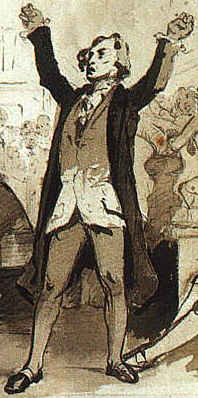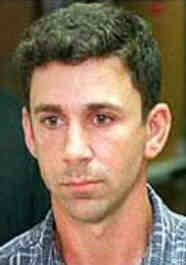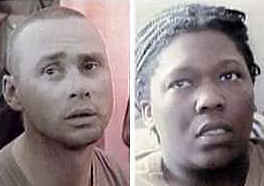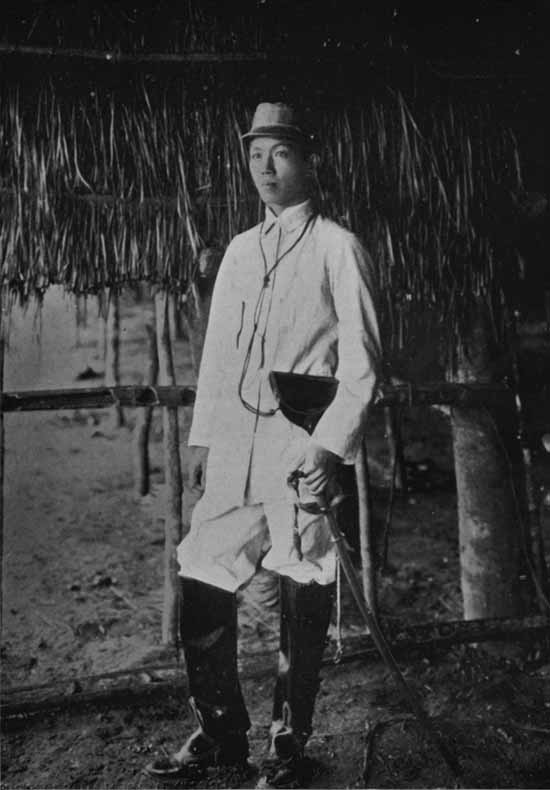
2003 Referendum in Chechnya, rigged by the Russian occupiers, purports to show that the majority of Chechens does not want to by free and independent, but prefers to be subjects of the Russian Federation.
2002 Hundreds of thousands demonstrate in Rome to protest Premier Silvio Berlusconi's efforts to make it easier to fire workers, and to denounce the 19 Mar 2002 assassination of Marco Biagi, government adviser who advocated Berlusconi's labor reform.
2001 As planned, the Russian orbiting space station Mir returns to Earth, breaks up in the atmosphere, and the debris fall into the South Pacific. The first element of Mir was launched on 20 February 1986. [photo >] — Con una demora de algunos días sobre los primeros cálculos, se produce la caída controlada de la estación orbital Mir sobre el Pacífico.
2001 Death penalty for innocent lambs. ^top^
US Federal officials seize a flock of sheep feared infected with a version of mad cow disease.
The 126 East Friesian milking sheep, are owned by Larry and Linda Faillace of East Warren, Vermont. Heartbhroken, the three Faillace children — Jackie, Francis and Heather — each held young lambs marked with red dye for removal. Neigbors and their children gathered to protest.
The sheep, imported from Belgium and the Netherlands in 1996, were placed under certain federal restrictions when they entered the country as part of USDA's scrapie control efforts. In 1998, USDA learned that it was likely that sheep from Europe were exposed to feed contaminated with bovine spongiform encephalopathy. At that time, the state of Vermont, at the request of USDA, imposed a quarantine on these flocks, which prohibited slaughter or sale for breeding purposes.

[< photo: Weeping, Mary Jo Cahilly-Bretzin, 8, carries out the last lamb to a waiting federal stock truck at the Faillace farm in East Warren, Vermont]
Transmissible Spongiform Encephalopathy (TSE) is a class of degenerative neurological diseases that is characterized by a very long incubation period and a 100% mortality rate. Two of the better known varieties of TSE are BSE (bovine spongiform encephalopathy, or mad cow disease) in cattle and scrapie in sheep. Unlike BSE, there is no evidence that scrapie poses a risk to human health. Based on current testing methodology, there is no way to determine whether the sheep have BSE or scrapie.
On 14 July 2000, USDA issued a declaration of extraordinary emergency to acquire the sheep. This action was contested by the flock owners. A federal district court judge ruled in favor of USDA based on the merits of the case. The flock owners appealed to the Second Circuit Court requesting a stay, which was denied. The sheep will be transported to USDA's National Veterinary Services Laboratories in Ames, Iowa, where they will be humanely euthanized. Tissue samples will be collected from the sheep for diagnostic testing. The owners will be compensated for the fair market value of the sheep.
The first such seizure of any US farm animals took place two days earlier in Montpelier, Vermont, when Houghton Freeman's flock of 233 sheep was taken away. On July 10, 2000, four sheep from this flock tested positive for TSE.
Another flock of 21 sheep from the same family of sheep was voluntarily turned over to government officials in the summer of 2000 by their Lyndonville owner. The sheep were destroyed.
The human version of BSE, which like the animal version has a lengthy incubation period, has killed almost 100 people in Great Britain since 1995, when it nearly wiped out the British beef industry (as it was recovering, it was devastated again in 2001 by foot-and-mouth disease). Scrapie has been in the United States since at least 1947, but there are no known domestic cases of mad cow disease. Destroying the sheep would eliminate them as a possible source of BSE. BSE has been transmitted to sheep experimentally through the feeding of small amounts of infected cattle brain. Testing to determine whether the Vermont sheep have scrapie or BSE wirr take two to three years to complete.
More on this “Silence the Lambs” operation.
Backgrounder on Transmissible Spongiform Encephalopathies (PDF)


 Deaths
Deaths
 Master Sgt. Robert J. Dowdy, 38,
of Cleveland, the 507th's first sergeant,
Master Sgt. Robert J. Dowdy, 38,
of Cleveland, the 507th's first sergeant,

 Pfc.
James Kiehl, 22, of Comfort, Texas, computer repair technician.
Pfc.
James Kiehl, 22, of Comfort, Texas, computer repair technician. 


 Sgt. Donald R. Walters, 33, of Salem,
Ore.. cook and mechanic.
Sgt. Donald R. Walters, 33, of Salem,
Ore.. cook and mechanic. 

 Born of Chinese and Tagalog parentage, he completed his education
at the University of Santo Tomás, Manila. In August 1896 he
was mayor of Cavite Viejo and was the local leader of the Katipunan,
a revolutionary society that fought bitterly and successfully against
the Spanish. In December 1897 he signed an agreement called the Pact
of Biac-na-Bató with the Spanish governor general. He agreed
to leave the Philippines and to remain permanently in exile on condition
of a substantial financial reward from Spain coupled with the promise
of liberal reforms. While in Hong Kong and Singapore he made arrangements
with representatives of the US consulates and of Commodore George
Dewey to return to the Philippines to assist the United States in
the war against Spain.
Born of Chinese and Tagalog parentage, he completed his education
at the University of Santo Tomás, Manila. In August 1896 he
was mayor of Cavite Viejo and was the local leader of the Katipunan,
a revolutionary society that fought bitterly and successfully against
the Spanish. In December 1897 he signed an agreement called the Pact
of Biac-na-Bató with the Spanish governor general. He agreed
to leave the Philippines and to remain permanently in exile on condition
of a substantial financial reward from Spain coupled with the promise
of liberal reforms. While in Hong Kong and Singapore he made arrangements
with representatives of the US consulates and of Commodore George
Dewey to return to the Philippines to assist the United States in
the war against Spain.